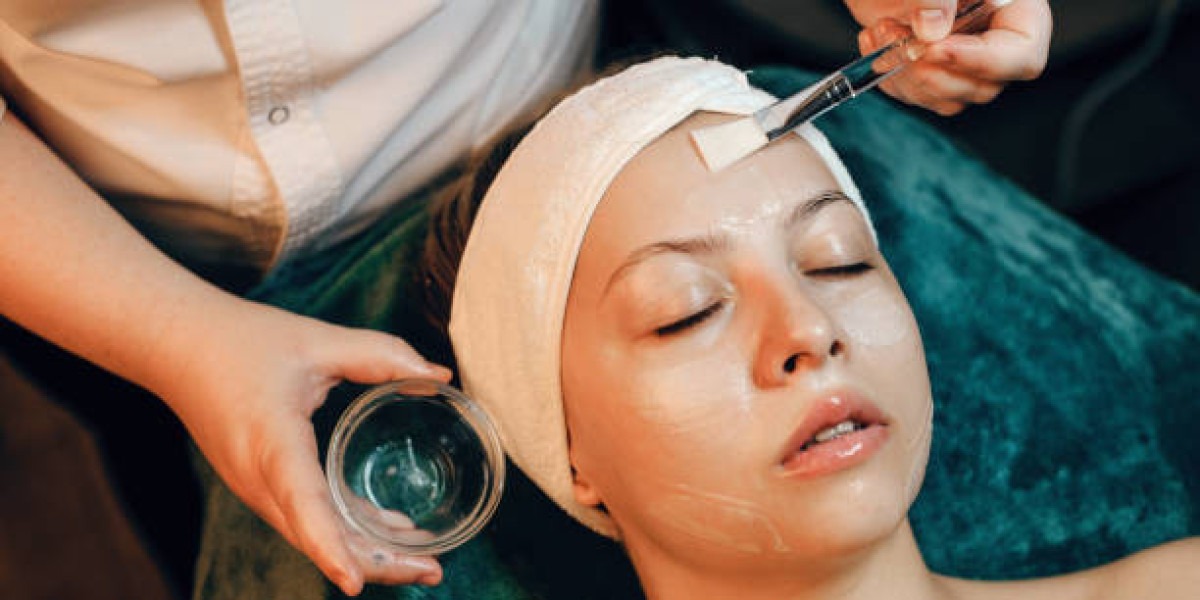Introduction
We all want our skin to be perfect, young, and glowing. But as we age, we experience skin imperfections caused by a number of factors including sun damage, pollution, and acne. One of the most successful dermatological methods to improve the quality of skin is chemical peels. This approach is popular and can be used for many different skin conditions while improving overall skin quality. In this article, we will explain some of the benefits and risks of undergoing a Chemical Peel, types of peels available, costs of treatment, and if it really works, so you can make an educated decision when considering this type of skin treatment.
What is a Chemical Peel?
A chemical peel is a cosmetic treatment that utilizes a chemical solution applied to the skin to exfoliate and remove dead skin cells. This process stimulates the growth of new, healthier skin, creating a smoother, more bright and youthful appearance. Chemical peels can be performed on the face, neck, hands, and may even be used on the body, depending on the treated skin concern.
Benefits of Chemical Peels
Chemical peels offer numerous benefits for different skin types and concerns. Some of the key advantages include:
1. Improves Skin Texture and Tone
Chemical peels help in reducing rough skin texture, giving the skin a smooth and even tone.
2. Reduces Fine Lines and Wrinkles
By promoting collagen production, chemical peels can diminish fine lines and wrinkles, especially those caused by sun damage and aging.
3. Treats Acne and Acne Scars
Certain chemical peels contain ingredients that target acne-causing bacteria and help reduce acne scars over time.
4. Minimizes Hyperpigmentation and Sun Damage
Chemical peels help fade dark spots, melasma, and sun damage, leading to a brighter complexion.
5. Unclogs Pores and Reduces Breakouts
By exfoliating the skin and removing excess oil, chemical peels prevent clogged pores and reduce the frequency of breakouts.
6. Enhances Product Absorption
After a chemical peel, skincare products penetrate deeper into the skin, making them more effective.
Types of Chemical Peels
Chemical peels are categorized into three main types based on their intensity and depth of penetration:
1. Superficial Peels (Light Peels)
Targets the outermost layer of the skin (epidermis).
Uses mild acids like alpha-hydroxy acids (AHAs) or beta-hydroxy acids (BHAs).
Treats mild discoloration, rough skin, and acne.
Minimal downtime; slight redness may occur.
2. Medium Peels
Penetrates the outer and middle layers of the skin.
Often contains trichloroacetic acid (TCA) or glycolic acid.
Helps reduce wrinkles, acne scars, and pigmentation.
Moderate downtime with some peeling and redness.
3. Deep Peels
Reaches the deeper layers of the skin.
Uses phenol or high-concentration TCA.
Treats deep wrinkles, scars, and severe sun damage.
Requires significant recovery time and medical supervision.
Costs of Chemical Peels
The cost of chemical peels varies based on factors like the type of peel, the clinic’s location, and the expertise of the provider. Here’s a general breakdown:
Superficial Peel: $100 - $300 per session.
Medium Peel: $300 - $1,000 per session.
Deep Peel: $1,000 - $3,500+ per session.
It’s important to consult a dermatologist to determine which type of chemical peel best suits your skin and budget.
How Chemical Peels Improve Skin
Chemical peels speed up the body's natural process of exfoliating the skin. As old skin is shed, there is new, healthy skin waiting to be revealed underneath for a fresher appearance. Chemical peels also build collagen and elastin, which is important for keeping skin firm and youthful. Frequent treatments allow patients to show visible signs of rejuvenation.
Precautions and Aftercare
Before Treatment:
Avoid sun exposure and tanning.
Stop using retinoids and harsh exfoliants a week before.
Consult with a dermatologist to choose the right peel for your skin type.
After Treatment:
Expect some redness, peeling, and sensitivity.
Use gentle skincare products and avoid harsh chemicals.
Apply broad-spectrum sunscreen daily to protect the new skin.
Stay hydrated and moisturized to aid in skin healing.
Is a Chemical Peel Right for You?
Generally, chemical peels are safe for most skin types but not safe for those with sensitive skin, moderate to severe rosacea, or an active infection. Before undergoing a chemical peel procedure, please schedule an appointment with a dermatologist to evaluate your skin and develop an appropriate treatment plan.
Conclusion
If you're seeking to achieve glowing, clear, and youthful skin, chemical peels are a fantastic option. Chemical peels are targeted to help address acne, textural irregularities, fine lines, wrinkles, and pigmentation. When done by a qualified professional following proper protocols and post-care, chemical peels can greatly improve the condition and appearance of the skin.
Ready to Transform Your Skin?
Book a consultation with a dermatologist today and find the perfect chemical peel for your skin!
Explore the benefits of chemical peels and give your skin the care it deserves!
Created By: Njinsky







